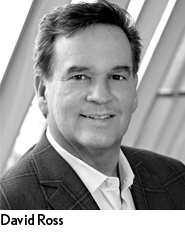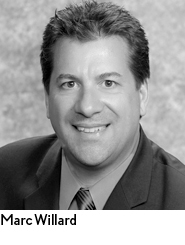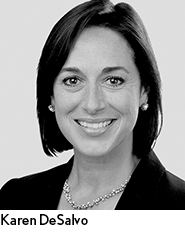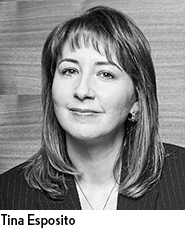HFMA Executive Roundtable: Interoperability: Driving or Impeding Value-Based Care?
Sponsored by Humana
On the road to value-based care, inadequate interoperability between diverse systems is a substantial roadblock. Although organizations are slightly better at sharing information internally, they are truly struggling with how to exchange data with external providers, payers, and other partners. Without this ability, organizations may be limited in how much they can fully pursue value-based models. In this roundtable, sponsored by Humana, several healthcare financial and information technology leaders discuss the effects of poor interoperability and how organizations can improve this key enabler of change.
How does poor interoperability affect organizations’ value-based care efforts?
Karen DeSalvo: Interoperability is one of the most important underpinnings to value-based care. It facilitates a good patient experience, keeps costs down, and ensures the best treatment. In communities that have richer, deeper, and longer experiences with health information technology (HIT), including with data sharing, there’s less waste in the system and more progress in aligning the business case around value-based care.
Tina Esposito: Poor interoperability works against value-based care. The promise of this model is that it puts the patient at the center and ensures that providers are fundamentally focused on improving the patient’s overall health, as opposed to a fee-for-service model, which zeroes in on the current care episode. When you have a lack of interoperability, you don’t have the entire story, and you cannot fully appreciate the patient’s needs. Just as critical, you can’t communicate information to the providers and/or hospitals that the patient may go to next. You merely continue to silo care and limit the opportunity for total health management.
Marc Willard: Even beyond value-based care, the ability to share information between providers is something we should strive for because it’s good practice and the right thing to do. Without it, providers can’t make the most informed decisions because they don’t know the full picture. Not only is this potentially bad for the patient’s health, but it also adds waste into the system, driving up the cost of care.
Which clinical and financial processes would work better if systems seamlessly shared information?
David Ross: A spectrum of things would be better—we would be able to more effectively manage population health, lower the cost of care delivery, speed treatment, and the list goes on. When enrolling a patient in a value-based care program, we would have access to their historical patient record and have a comprehensive baseline on which to ground care. If a patient presents with high-risk factors, such as complications/comorbid conditions or specific health history concerns, healthcare providers could have protocols that put these types of patients on a more aggressive care track, so they could ensure proactive treatment while keeping costs in check.
Willard: A good example of interoperability’s benefits relates to duplicated tests. If a patient switches providers, the new provider may re-run certain tests like bloodwork because he or she doesn’t have access to the original test results. This unnecessary duplication significantly increases the cost of health care. Plus, it can put the patient at risk. This is especially true in the emergency department (ED). Let’s say I’m admitted to an ED, and my patient information is not available because of poor interoperability, then the hospital may have to start from the beginning, trying to understand my health history to diagnose and treat my condition, which could take precious time. If I have any medication allergies and the treating physician doesn’t know about them, the ramifications could be severe.
Esposito: Interoperability can also yield the best plan of care. If the patient is dealing with heart failure, for instance, the quality of care rises exponentially when all his or her healthcare providers understand the current status, whether that has fluctuated from baseline, and what the plan of care is. The patient is able to receive the correct treatment at just the right time. In my mind, that’s the promise of value-based care.
DeSalvo: Better data exchange would also allow us to see beyond our own environments for treatment and coverage opportunities. For example, if your patient is a low-income senior and eligible for SNAP [Supplemental Nutrition Assistance Program] or food care benefits, you could connect patients to those benefits and then also see the medical care they are receiving through those benefits. You could see all the care they are getting out in the community, make sure you’re providing the right services, and double-check that there aren’t any gaps.
It would also help with quality reporting. If you’re being measured based on how many of your patients receive a flu shot, for instance, but a patient gets a shot at a local retail pharmacy and you don’t know it’s happened, then you can’t report that as part of your quality measures. Sophisticated communities are able to pull up data centered on a person, allowing them to define quality more broadly. If they’re involved in a value-based care model that rewards quality, this broader definition can translate into a financial return.
Which specific data need to be shared to better manage or improve financial and clinical outcomes?
Willard: There are two types of data that should be shared: 1.) the patient’s health information, which includes the patient’s health history, and 2.) transactional or event-based information, such as whether a patient has entered the hospital or whether he or she has lab results available. Currently, health care does a pretty good job exchanging event-based information. However, it gets a little dicey sharing health records. This is what we need to work on to better enable value-based care. We should put the patient’s health information in the middle of providers and let everyone access it and keep it up-to-date. Although we’ve started down this path, we are not there yet.
Esposito: We’re also beginning to understand that to advance health care we should use more than just clinical electronic health record (EHR) data or claims information. Although there’s certainly value there, we need to understand more than what occurred at the last visit or in the last hospitalization. We should be considering more nontraditional data, including that which patients capture themselves, such as through wearable devices. It’s becoming clear how important this kind of information is in terms of capturing patients’ well-being and engaging them in care. We’re also realizing the value of social determinants of health—understanding the social, emotional, and cultural issues a patient may be dealing with. All of this plays into creating a body of knowledge that can help providers take care of patients in a much deeper and more meaningful way.
What gaps exist between where organizations are now and where they need to be?
Ross: To oversimplify, everybody needs to be able to talk to one another. Hospitals and providers—even within the same health system—are at varying levels of interoperability and are using different technology platforms, with some providers, such as community physicians, not using technology at all and relying on paper. This makes basic communication difficult. As an example, within a health system, one could go from one department to another and not see the information transfer—even within the same organization. Other industries have figured this out. For example, I could be anywhere in the world and go to an ATM and understand how much is in my bank account and what’s been put in and taken out over a period of time.
Willard: The technology exists to share information. This is in part because the industry has been working with convoluted data standards like [Health Level Seven International] HL7 2.0, which are not conducive to streamlined exchange. As an industry, we are moving toward FHIR [Fast Healthcare Interoperability Resources], which is a much cleaner standard and API set—akin to what you would see in financial services. Now, we as an industry must align our priorities to use this new standard to make interoperability a reality. We’re getting closer, but we still need to get to the point where we recognize that it’s the patient’s data, and it is not “owned” by the provider, payer, or electronic health record vendor. We must break down these individual silos. I firmly believe we will get there because we have to. Otherwise, health care is going to keep being inefficient and expensive—and the patient will suffer.
What are some strategies for closing the gaps?
DeSalvo: It’s going to take a combination of technology, culture change, and a strong business case to make this work—and everybody in the ecosystem has a responsibility to get it done. Let’s start with consumers. They have a responsibility to demand their information. It’s theirs to control, and they must tell providers that they expect to share their data with other providers and vice versa.
Providers also have role. Every entity from hospitals and health systems to accountable care organizations and small group practices must demand that their technology partners create open platforms that follow the national standards to allow for smoother interoperability. These demands can be built into contracts along with other expectations, such as how technology connects and shares information with health information exchanges (HIEs). It shouldn’t just be the senior leaders pushing for greater communication; others must as well. Procurement officers need to make sure that any technology requests for proposals (RFPs) indicate that interoperability is required, and compliance officers must communicate that HIPAA is not a barrier to data flow. HIPAA is designed to enable data sharing—unfortunately, there is a lot of misunderstanding about what providers are allowed to share, which causes inadvertent data blocking.
Payers are also crucial to this effort. Because they stand to gain if there are better outcomes, less waste, and more efficiency, they should be vocal about encouraging interoperability and commit to partnering with organizations that use technology that fosters seamless information exchange.
Willard: It’s the patient who must shout the loudest. The inability to share data is unacceptable, and they need to hold providers, payers, and technology companies accountable. In today’s era of instant and portable access to everything from our financial records to our grocery lists, we expect our health records to be the same: complete information in real time on any device from anywhere. Alongside the individual patient or member, the doctors also have to be selective with their EHRs and demand interoperability in their contracts. FHIR is a good data standard and API that everyone is getting behind, and providers should require their EHR vendors to support FHIR.
Another approach that could replace the current trajectory is finding ways for patients to take total control of their data—democratization of the information. Once that happens, the need for an EHR as the source for the sole health record will diminish. As the data is freed, patients can hold their health records like they hold their financial information, carrying their records with them on their smartphones. In fact, Apple is pushing this with FHIR and iOS 11.3. We can imagine a time where a person entering a provider’s office could simply open an app on his or her phone, securely log in, and send his or her health record to the provider’s EHR. To make this future a reality, we have to disrupt the status quo, but that is what it’s going to take to get us from here to there.
DeSalvo: There are examples of interoperability happening now. There’s a model in the field called a “network of networks,” in which information exchanges connect with one another to share information. This is much easier than having every single hospital or health system connect to every other hospital or health system—plus there is more confidence that HIEs will be compliant with security requirements. This model could be up and running in the next three years, but that may be shorter given the business case that’s out there right now.
With all the technology advancements today, why is interoperability falling behind?
Esposito: It’s been an unintended consequence. Health care has made significant progress toward technology adoption with the HITECH Act, meaningful use, and HL7. However, what happened along the way was that we got so consumed with checking the box on the various requirements that we forgot to consider how the different systems would talk with each other. The advancements have been incredible in terms of bringing health care online, and now it’s a matter of ensuring that we pursue technology advancements together, not solely as individual providers.
Ross: I agree. If we had developed a standard early on and required healthcare organizations and providers to adhere to it, then we would now have a steady flow of information and data. Consider the financial industry—their systems were created with common fields and structure. This has allowed them to advance more quickly.
DeSalvo: When you look at other industries like the financial sector, it took them a long time to get their standards together. They also had strong financial incentives, and they had earlier agreement about how to self-regulate. Unfortunately, health care was late to the party, and we got ourselves wrapped around our own axle by providing incentives, which helped offset the cost of adoption but did not require non-proprietary standards. As people went out and bought products in a rush to meet the requirements and obtain the incentives, they bought what was on the shelf, and none of the basic systems were designed to share information. The thought was the free market would resolve this, but it hasn’t. In hindsight, this is a place where the federal government should have been given the authority to work interoperability into the requirements.
Are there technologies on the horizon that could facilitate interoperability?
Ross: FHIR is probably the most familiar of the new approaches, and it has tremendous promise. Although some systems are starting to embrace FHIR, the industry as a whole is not quite there yet.
Willard: The great thing about FHIR is there is no way to get around the standard. With HL7 2.0, it is complicated—multiple systems could be using the standard but still not easily share information. With FHIR, either you follow the rules or you don’t—there is nothing left to interpretation. There are other emerging technologies—like blockchain—that could also smooth data exchange, but we are far from completely capitalizing on those.
How far is the industry away from achieving true interoperability? What will it take to get there?
DeSalvo: Value-based payment paused in 2017 due to the new presidential administration, and that slowed down one of the biggest business drivers for interoperability. Things are going to pick up pace again because the Department of Health and Human Services has indicated that they’re ready to aggressively move forward, including setting mandatory expectations. Once organizations begin participating in value-based care models more regularly—especially ones that have downside risk—they will need to be able to seamlessly share data to function successfully. This need is going to push things along—and we’re probably looking at a five- to 10-year journey to accomplish that. The interoperability component could happen more quickly if health systems, consumers, and payers demand it.
Willard: I started my interoperability company, Certify, in 2003, and I thought I’d be done by 2008—clearly this is taking longer than expected. I believe true semantic interoperability is probably five years or more out, and that is with a real commitment from the various players. We’re all moving in the right direction, and I’ve noticed in the last few years the barriers have lessened—it’s a lot easier to work across boundaries now. There are still hurdles ahead of us—such as financial, cultural, and business case roadblocks—but we are on the right track; we just all need to go faster.
Ross: If we don’t make more progress, then it will be made for us. We’ve already seen movement in this direction with recent healthcare industry announcements related to activities with traditional non-healthcare providers entering the healthcare space. They didn’t specifically say they are going to solve interoperability, but sharing information is the space in which they live. They’ve created a platform that can talk to anybody across the world in real time. So, as an industry, we must either figure it out on our own, or partner with third parties, or, if we do nothing, then someone else will do it for us.
DeSalvo: In the world of interoperability, everybody is looking to someone else to solve the hurdles we face, and yet everyone has a part to play in pushing on the system. To move forward, you have to figure which piece of the puzzle is yours to fix. Moreover, we all must step away from the idea that this is our data to control and remember it’s our patients’ data, and it must be available whenever they need it.
HFMA Roundtable Participants

David Ross is vice president, operations for Tenet Healthcare in Dallas.

Marc Willard is president of Transcend Insights in San Diego.

Karen DeSalvo a is former assistant secretary for health, U.S. Department of Health and Human Services, and the former National Coordinator for Health Information Technology.

Tina Esposito is vice president, information and technology innovation for Advocate Aurora Health in Downers Grove, Ill.
About Humana
Humana Inc. (NYSE: HUM) is committed to helping our millions of medical and specialty members achieve their best health. Our successful history in care delivery and health plan administration is helping us create a new kind of integrated care with the power to improve health and well-being and lower costs. Our efforts are leading to a better quality of life for people with Medicare, families, individuals, military service personnel, and communities at large.
Footnotes
a. Karen DeSalvo is a member of Humana’s Board of Directors.





